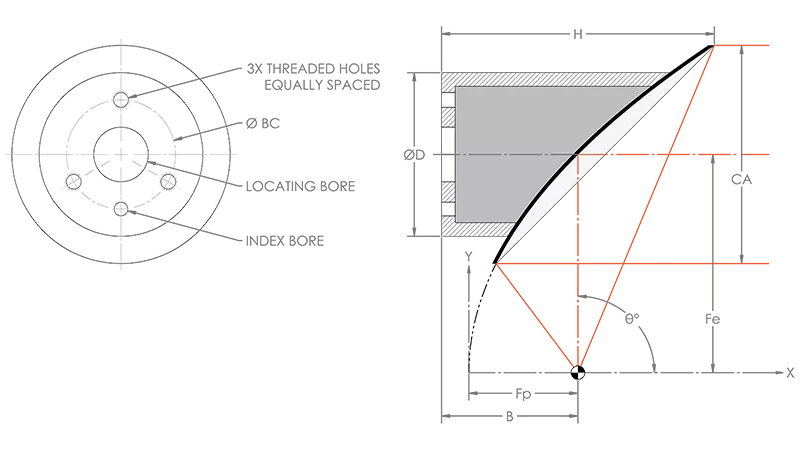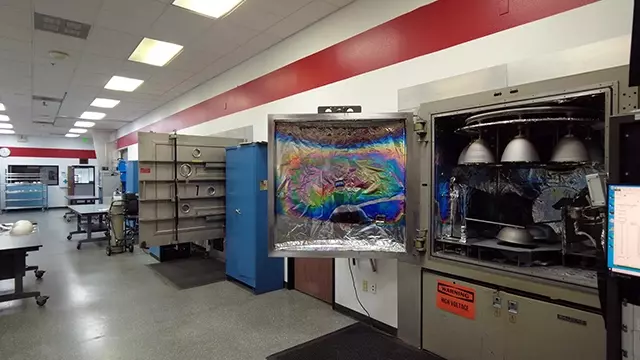Off-Axis Parabolic Reflectors

Off-Axis Parabolic Reflector Diagram
Off-Axis Parabolic Reflectors achromatically direct a collimated beam of light to or from a focal point.
- Collimates a Divergent Light Source or Focuses a Collimated Beam
- OAP Profile Eliminates Spherical Aberration
- Surface Enhancements: Optical Coatings
Optiforms Off-the-Shelf Off-Axis Parabolic Reflectors
| Part Number (Click to View PDF) | EFL (in) | EFL (mm) | F (in) | F (mm) |
|---|---|---|---|---|
| OAP 5 | 0.400 | 10.16 | 0.200 | 5.08 |
| OAP 10 | 1.000 | 25.40 | 0.400 | 10.16 |
| OAP 19 | 1.500 | 38.10 | 0.750 | 19.05 |
| OAP 25 | 2.534 | 64.36 | 1.000 | 25.40 |
| OAP 38 | 3.000 | 76.20 | 1.500 | 38.10 |
| OAP 60 | 4.669 | 118.59 | 2.350 | 59.69 |
| OAP 76 | 6.000 | 152.40 | 3.000 | 76.20 |
| OAP 178 | 14.000 | 355.60 | 7.000 | 177.80 |
Stock OAP reflectors are coated with electroplated bright rhodium, with the exception of OAP178, which can only have vacuum coatings applied. See our thin film vacuum coating options.
*F = Flange
Need a Custom Off-Axis Parabolic Reflector?
Custom CA and V-DIA Dimensions Available
Electroforming Process
The electroforming manufacturing method generates an exact copy via replication in metal (typically nickel) of a master mandrel by a process called electrodeposition. Specific benefits of electroforming are low unit costs, exact atomic scale, repeatability and excellent process control for quality. Often times the design engineer will find electroforming is preferred for many applications requiring a complex true geometric shape form factor, thin walls, and high repeatability.



